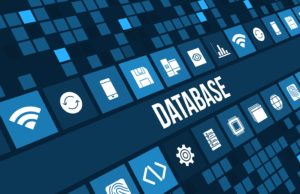I’ve heard so many nonprofit leaders talk about client management or performance management databases like they are the answer to all of a program’s problems.
If we had a database, we could . . . 
- Know which clients are succeeding
- Better monitor our activities
- Track client progress over time
- Streamline our billing
- Save time on outcome reporting
- And so much more . . .
Yes, you probably could. But what makes most of that possible is not the technology itself but the proper planning and strategy you use to guide the technology. A poorly planned, poorly designed database is useless. Not only is it useless, it’s an expensive and frustrating waste of time.
Databases are Tools Only
They are not mind-readers, miracle-workers, or program designers! They are tools to help you answer questions. But first, you’ve got to know what your learning & evaluation questions are, what information is necessary to answer them, and in what format you want the answers. Then your vendor can help you set up your database to turn your data into useful information.
Before You Buy or Build
I’d like to start this blog series by sharing some recommendations for what to do before you even begin to shop for, design, or reconfigure a database. I think it boils down to four keys areas of awareness and understanding:
- Know Your Programs
- Know your Data
- Know What You Want to Know
- Know What Your Stakeholders Need
This is the process Insight Partners facilitates for our clients in order to identify the specific features, functions, and configuration they need in a database.
Today, I’ll start with #1, and in subsequent posts, I’ll tackle the others.
Know Your Programs
If one of your primary goals for the database is performance management – gathering data that you can use to assess program performance and inform decision-making and improvements – then you first need to know your programs inside and out.
- What do you do? Each program, each position, each step of the way.
- How do you do it? Location, format, length.
- How often do you do each? One-time or repeated interventions.
- Why do you do it?
- What outcomes are you aiming to achieve?
- What indicators signal the achievement of those outcomes?
The answers to these questions – along with the others we’ll discuss in coming posts – are essential factors that should guide your data collection and reporting strategies. Without those answers, you might collect a lot of data that you can’t use. (Tip: If your program is undergoing significant changes or is still in pilot or fine-tuning phases, this is not the time to design a database for it!)
Logic Models can be valuable program design and evaluation planning tools. They can serve as road maps for your data collection. Here is the template we use.
And for more on outcomes and indicators, see these recent posts (November 6 and November 20).
Next time, I’ll address how to get to know and organize your data and articulate your learning and evaluation questions. Both are essential to drawing a clear and effective blueprint for your database.
